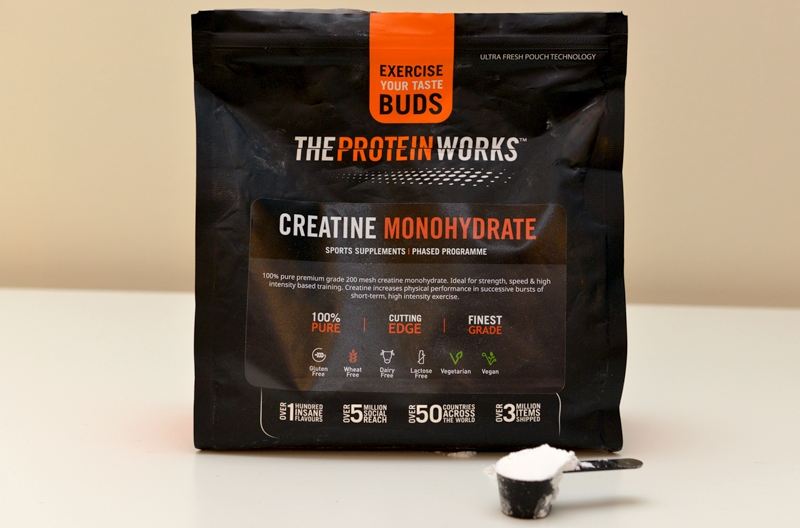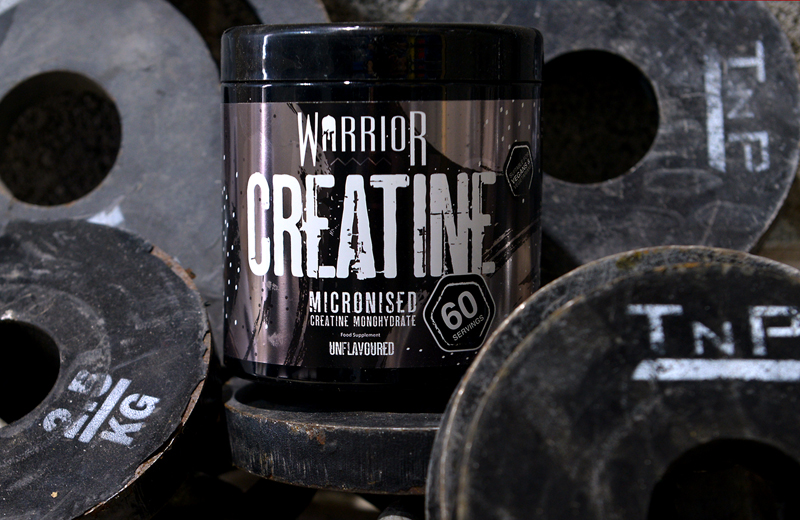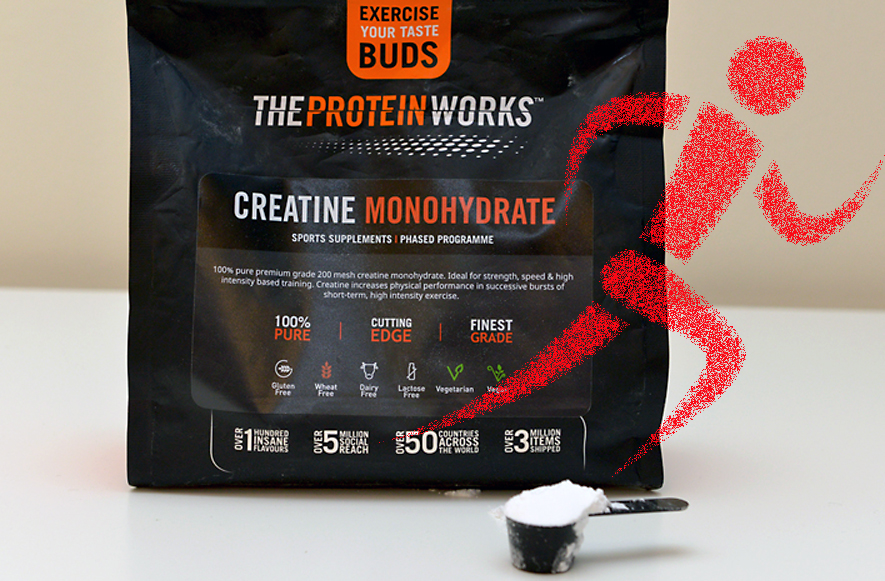Creatine: is it really safe for long-term use?
Creatine is the number one choice of sports supplement for athletes at all levels – and with good reason. Unlike most products that compete for space on the shelves of health food stores up and down the country, creatine does precisely what it says on the tin: namely boost the body’s phosphocreatine energy system, thereby enhancing short-term, high intensity anaerobic efforts. But, while there are few, if any, remaining concerns about short-term use, there are still no guarantees of long-term safety, writes Andrew Hamilton.
Nevertheless, many researchers remained concerned about the potential longer-term health effects of prolonged creatine supplementation, particularly on the health of the kidneys. This was because each day about 2% of the body’s store of creatine is broken down to a substance called creatinine, which has to be cleared from the body by the kidneys. Ingesting large doses of creatine over a long period of time could theoretically place a significant extra burden on the kidneys, possibly leading to damage for those with less than perfect kidney function.
But more than 10 years of widespread creatine use and hundreds of published studies have produced little or no evidence that long-term creatine use poses a threat to kidney health. Quite the contrary, in fact. For example, a study carried out earlier this year looked at the effects of long- term high-dose creatine supplementation on 175 patients with a disease known as amyotrophic lateral sclerosis, which causes damage to motor neurones in the brain and spinal chord (2). These patients were randomly assigned to 310 days’ treatment with either creatine monohydrate or placebo (animal studies had suggested that extra creatine could delay the progression of this disease).
The researchers monitored the patients carefully for any signs of adverse effects, particularly on kidney function, but found no significant differences between the groups. Given that the creatine group were ingesting 10g per day – three times the dose needed by athletes to maintain muscle creatine saturation – this study provides strong evidence for the safety of long- term supplementation by athletes.
Two years earlier, an even lengthier study looked into the health effects of creatine on 98 college footballers, split into four treatment groups as follows (3):
- No creatine (control);
- Up to 6 months’ use;
- 7-12 months’ use;
- 13-21 months’ use.
The footballers in the three creatine groups were given 15.75g per day of creatine monohydrate for five days and an average of 5g per day thereafter. Urine and fasting blood samples were collected throughout the study to assess a wide range of metabolic parameters, clinical status and kidney function. Analysis of the results showed no measurable differences in metabolism or in kidney function between any of the groups.
Other studies on the link between creatine use and kidney damage have also drawn a blank, although most researchers have continued to advise against long-term creatine use by people with a history of kidney problems, because of the theoretical risks outlined above. Even for such individuals, though, there is little evidence that creatine use poses a risk in reality. Although no studies on long-term creatine use in kidney- impaired humans have been carried out, some animal studies have suggested that there is no risk to speak of.
The importance of purity
Although debate about long-term creatine use tends to focus on safety, the purity of the product you use is just as important. Creatine products such as creatine monohydrate can and do vary in purity, with significant differences in the amounts of potentially toxic impurities present. This is because the industrial production of creatine monohydrate (from sarcosine and cyanamide) also produces harmful contaminants such as dicyandiamide, dihydrotriazines and creatinine, which have to be removed subsequently. Regular creatine users should therefore purchase products only from reputable manufacturers who are able to provide a ‘Certificate of Analysis’. An inspection of such a certificate should indicate the following:- Appearance – should be white to pale cream
- Assay – should be at least 95% via HPLC or HPCE
- Moisture content – should be less than or equal to 12.5%
- Microbial/pathogenic contamination – should be negative for E coli, S aureus and Salmonella
- Yeasts and moulds – should be less than 50 per gram
- Poisons/heavy metals – should be less than 10ppm for lead and mercury
- Other contaminants – should be less than 3ppm for arsenic, 30ppm for dicyandiamide and non-detectable for dihydrotriazine.
For example, a study on rats compared the effects of high-dose long-term creatine use in those with healthy kidneys and those with substantial kidney impairment (4). Both the healthy and kidney- impaired rats were further subdivided into control or creatine groups. The creatine-fed rats were given around 1g per kg of creatine per day, while the control rats received no creatine at all. After four weeks on creatine, the kidney-impaired rats showed no deterioration by comparison with kidney-impaired controls. Indeed, the researchers were unable to detect any significant changes in kidney function at all. This is quite extraordinary when you consider that the human equivalent of this dosage of creatine in rats would be about 70g per day for 3-4 years!
So does long-term creatine use have a completely clean bill of health? In fact, there remain a number of unanswered questions. For example, some nutritionists have put forward the theory that the water-retaining effect of creatine supplementation could interfere with the normal transport of fluids, which in turn could impair exercise performance in very hot conditions.
However, a very recent study examining the responses of 16 healthy subjects to a heat-stress test seems to indicate that these fears may also be unfounded (5). The test involved cycling at 55% VO2max in temperatures of 39°C for 40 minutes on two separate occasions, before and after five days’ treatment with either creatine (20g per day) or placebo. Temperature measurements taken during the test showed no between-groups differences for any measured parameters, and the researchers concluded that creatine supplementation had no effect on thermoregulation during exercise at this level of heat.
However, the creatine horizon might not be completely cloud-free for long-term users. For example, a fairly recent study on human metabolism has shown that creatine in the body is metabolised into a substance known as methylamine, which is further converted to formaldehyde (6). Formaldehyde is well known to damage proteins and DNA via a process known as ‘cross-linking’. Some toxicologists believe that the chronic over-production of formaldehyde in the body via this process could lead to such problems as vascular damage and diabetic complications in the very long term.
One adverse effect that appears beyond doubt is the fact that long-term creatine use can significantly impair the body’s natural production of creatine. Although creatine occurs naturally in some foods, dietary sources are not normally sufficient to provide for the body’s needs, so creatine is synthesised in the body from the amino acid arginine and another precursor molecule called guanidinoacetate. This process is mediated by special enzymes, including amidinotransferase and transamidinase.
What happens to natural creatine synthesis if you consume a large amount of supplemental creatine? Is the natural process impaired and, if so, to what extent? To answer this question, a recently published study examined the effect of creatine supplementation on 16 healthy young adults, randomly assigned to one of two groups (8):
- Creatine – 20g per day of creatine monohydrate (loading dose) for one week followed by 5g per day (maintenance dose) for a further 19 weeks;
- Control – same protocol as above but with an inert placebo instead of creatine.
The researchers took blood samples at weeks 1, 10 and 20, analysing them for creatine precursor molecules – naturally occurring molecules that are used by the body to synthesise its own creatine and which signify that the process is actually taking place. They found that, by comparison with the control group, the creatine users had substantially reduced levels of the creatine precursor guanidinoacetate – the main building block for creatine synthesis in the body. Guanidinoacetate levels were 50% lower during the creatine-loading phase and 30% lower during the maintenance phase. The researchers concluded that a key enzyme (transamidinase) was being inhibited by the supplemental creatine, reducing the ability of the body to make its own.
‘So what?’, I hear you ask. Surely it makes sense for the body to reduce its own rate of creatine synthesis if it’s getting lots in supplemental form? Well, yes it does, but these results raise an important question: what might be the effect of very long-term creatine supplementation on the enzymes used for creatine synthesis? We know that other enzymes in the body can become permanently down-regulated in particular circumstances; for example, those who abstain from dairy produce for very long periods sometimes find that the reintroduction of milk and milk products results in abdominal distress and diarrhoea. This is because during the abstinence period the production by the body of the enzyme lactase, needed to break down the milk sugar lactose, is reduced and may even cease completely. When milk is reintroduced, the lactose it contains can no longer be metabolised properly because lactase is either insufficient or absent, leading to digestive problems.
Could creatine use cause the same kind of problem? Could continual high dose supplementation for very long periods lead to a permanent reduction in the body’s ability to synthesise its own creatine? And, if so, how would performance be affected when supplementation is discontinued? The answer is, of course, that we don’t yet know. In the study mentioned above (8), the extent of enzyme down-regulation produced by supplemental creatine was reduced when the subjects switched from the loading phase (20g per day) to the maintenance phase (5g per day). But remember that this recovery in creatine synthesis occurred after just one week of supplementation. And, while there are many, many long-term creatine users who report no problems when supplementation is stopped, we don’t yet have the data to promise users that there will definitely be no long-term effects.
Creatine is one of the best researched of all sports supplements, with an excellent safety record. That said, high dose creatine use does supply the body with much higher intakes of creatine than could ever be achieved naturally, even on diets emphasising creatine-rich foods (see table, below), which means there may still be some long-term effects.
Dietary creatine – key sources
The best sources of dietary creatine are meat and fish. However, a quick glance at the creatine content of some of the better sources shows that, while dietary creatine can make a significant contribution to a 2-3g per day maintenance phase, it would be virtually impossible to achieve the multi- gram daily intake required in the loading phase from dietary creatine alone without a huge extra calorie intake, making supplementation unavoidable.| Food | Approx creatine content (grams per lb) | Amount required in lbs (for 5 grams/day intake) | Calories contained |
|---|---|---|---|
| Herring (raw) | 3-4 | 1.4 | 1500 |
| Beef (lean) | 2 | 2.5 | 1400 |
| Cod (raw) | 1.4 | 3.6 | 1250 |
| Tuna (raw) | 1.8 | 2.8 | 1700 |
| Pork (lean) | 2 | 2.5 | 1700 |
| Salmon (raw) | 2 | 2.5 | 2100 |
| Milk (semi-skimmed) | 0.05 | 160 | 33600 |
| Prawns | Trace | Huge amounts! | Huge amounts! |
Pending further research, the best approach is probably to take the path of prudence by avoiding long-term, continuous creatine use.
A more sensible approach is to use creatine as and when it’s needed – such as during build-up or competition phases. Many athletes have reported that ‘cycling’ creatine (ie alternating periods of use and non-use) works well, and this approach also makes sense from a safety point of view. There are no hard and fast rules about how to structure these periods, although a common strategy is to follow a five-week period of creatine use (one week loading followed by four weeks maintenance) with a washout period of 4-5 weeks, where no creatine is taken.
Remember that creatine boosts your anaerobic power, helping you to train more intensely. Even during washout periods, you should still be experiencing the benefits of previous creatine use – ie more anaerobic power and strength. Remember, too, that you can avoid the high-dose loading phase by taking less creatine for longer, since 3g per day for 28 days produces the same degree of muscle saturation as 20g per day for five days.
Whichever route you take, don’t forget that once muscle saturation has been achieved there is no point in taking any more than the maintenance dose, since any extra will simply be excreted in the urine!
References
- Clin J Sport Med 1998; 8(4):298-304
- Int J Sports Med 2005; 26(4):307-13
- Mol Cell Biochem 2003; 244(1-2):95-104
- Nephrol Dial Transplant 2003; 18(2):258-64
- Nutrition 2005; 21(3): 301-7
- Med Hypotheses 2000; 54(5):726-8
- Pharmacotherapy 2005; 25(5):762-4
- J Appl Physiol 2004; 97(3):852-7
Newsletter Sign Up
Testimonials
Dr. Alexandra Fandetti-Robin, Back & Body Chiropractic
Elspeth Cowell MSCh DpodM SRCh HCPC reg
William Hunter, Nuffield Health
Newsletter Sign Up
Coaches Testimonials
Dr. Alexandra Fandetti-Robin, Back & Body Chiropractic
Elspeth Cowell MSCh DpodM SRCh HCPC reg
William Hunter, Nuffield Health
Keep up with latest sports science research and apply it to maximize performance
Today you have the chance to join a group of athletes, and sports coaches/trainers who all have something special in common...
They use the latest research to improve performance for themselves and their clients - both athletes and sports teams - with help from global specialists in the fields of sports science, sports medicine and sports psychology.
They do this by reading Sports Performance Bulletin, an easy-to-digest but serious-minded journal dedicated to high performance sports. SPB offers a wealth of information and insight into the latest research, in an easily-accessible and understood format, along with a wealth of practical recommendations.
*includes 3 coaching manuals
Get Inspired
All the latest techniques and approaches
Sports Performance Bulletin helps dedicated endurance athletes improve their performance. Sense-checking the latest sports science research, and sourcing evidence and case studies to support findings, Sports Performance Bulletin turns proven insights into easily digestible practical advice. Supporting athletes, coaches and professionals who wish to ensure their guidance and programmes are kept right up to date and based on credible science.












